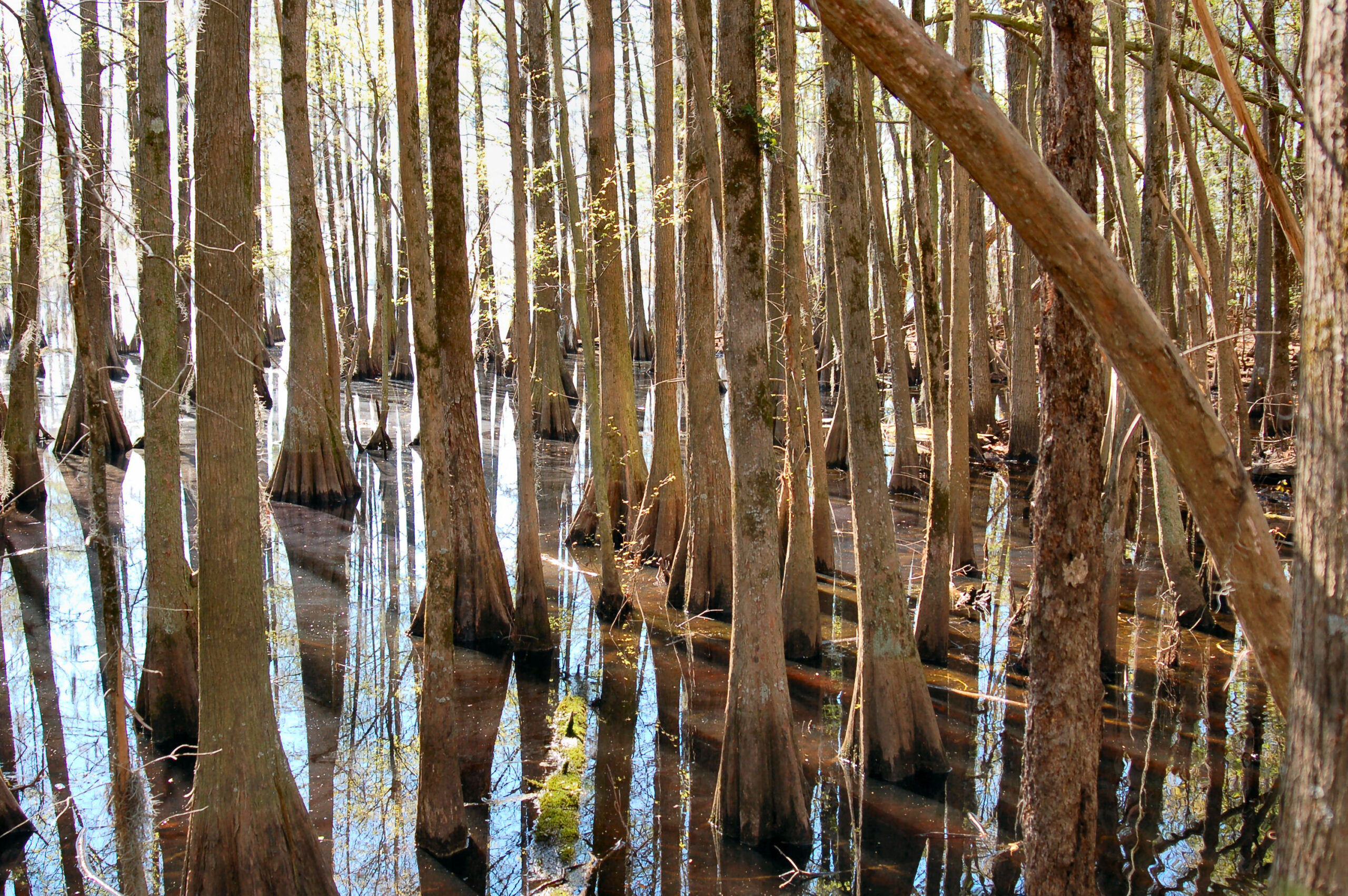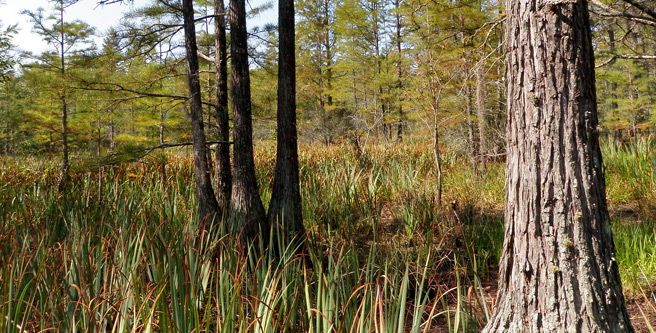Native Plants Nearby
Visiting Natives in Natural Settings
Where can you see native plants in their natural ecological settings? Depending on the plant, the answers can range from your own backyard to special preserves, with local and state Heritage Preserves and State Parks providing some of the best opportunities. Congaree National Park protects the largest intact expanse of old growth bottomland hardwood forest remaining in the southeastern United States, and provides fantastic field trip opportunities.
Preserves
SCNPS owns and manages, or assists in managing, three preserves. Please visit during an open house or a planned work session. These will be announced on our calendar, as well as through chapter newsletters. SCNPS preserves are: Rocky Shoals Spider Lily Preserve at Parks Mill, Lisa Matthews Memorial Bay Preserve, and Kingsburg Bay Preserve.
Our local chapters frequently arrange field trips to other sites of interest, and occasionally produce species lists of plants observed there. To make sure you are in-the-know about upcoming field trips, join and watch chapter newsletters for announcements.
South Carolina Association of Naturalists (SCAN) also hosts field trips and produces species lists after each outing.
Some areas where you can see communities of particular interest in South Carolina are highlighted below.
Visit Columbia’s Three Rivers Greenway just below the Broad River dam, Landsford Canal State Park in Lancaster, and a site owned by Naturaland Trust on Stevens Creek in McCormick County to see the beautiful and rare Rocky Shoals Spider Lily.
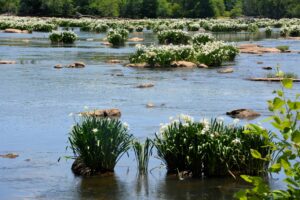
Visit the Bunched Arrowhead Heritage Preserve near Travelers Rest to see the plant, and subscribe to our newsletter for opportunities to help with the ongoing restoration efforts at the Blackwell Heritage Preserve site.
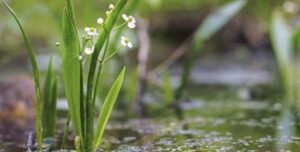
According to the SC Department of Natural Resources Geological Survey, Carolina Bays are “shallow, elliptical depressions found in the unconsolidated sediments throughout the Atlantic Coastal Plain from Florida to New Jersey (Glenn 1895)….They are sometimes called pocosins (Savage, 1982), an Indian word for swamp on a hill. Bays can range from thirty feet to almost three miles in diameter, are elongated in a northwest-southeast direction with long axes perpendicular to shoreline, and may have sand berms along their southeast and northeast edges (Hayes and Michel 2008; Glenn 1895).” For more information about the origins and geomorphology of Carolina Bays, visit SCDNR’s Carolina Bays website.
Carolina Bays support a wide variety of rare and unusual plants. Three excellent spots to visit are:
Cartwheel Bay Heritage Preserve in Horry County, where the mosaic of habitats among several different Carolina Bays provides habitat for a variety of plants including white-fringed, yellow-fringed and rosebud orchids, Venus’ fly traps, pitcher plants and a bounty of wildflowers. The narrow sand rims of the bay provide a habitat for the rare Wells pixie moss.
Janet Harrison High Pond Heritage Preserve in Aiken County, which protects a Carolina Bay community of rare plants including harperella, pink tickseed, Florida false loosestrife, dwarf burhead, slender arrowhead, and Robbins’ spikerush.
Lewis Ocean Bay Heritage Preserve in Horry County, to see the beauty of rare, insectivorous Venus flytraps or pitcher-plants, native orchids, azaleas and other wildflowers.
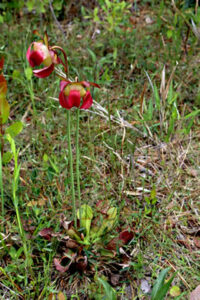
The sandhills community once stretched across the central portion of the state from Aiken near the Georgia border to Cheraw at the North Carolina border. Characterized by longleaf pine communities, the sandhills are home to a number of unusual species adapted to deep sandy soils and often dependent on fire. Visit Carolina Sandhills National Wildlife Refuge to see remnants of the longleaf pine/wire grass community that used to extend across the state, as well as pocosins, open water, and a variety of other habitat types. Over 1,000 species of plants have been identified there, including rare pitcher plant species, Well’s pixie moss, and white-wicky.
National Geographic named Jocassee Gorges one of “50 of the world’s last great places.” Managed by the SC Department of Natural Resources, Jocassee Gorges contains a multitude of plant species, notably the Oconee Bell, a rare wildflower found in only a few locations in the world. One of the best access points is Devil’s Fork State Park, where private concessions offer boat tours to some of the least accessible areas of the lands surrounding Lake Jocassee.
Eastatoe Creek Heritage Preserve is located nearby in a steep mountain gorge, where the spray from several streams rushing downhill enables three species of rare fern, one of which grows nowhere else in the country, to make a home. Cove and upland forest trees include white, red and chestnut oaks, hickories, red maples and black locusts. There are also numerous spring wildflowers, including bloodroot. An added bonus of a trip to Eastatoe Creek is the opportunity to cross the water on one of two suspension bridges installed along this passage of the Palmetto Trail.
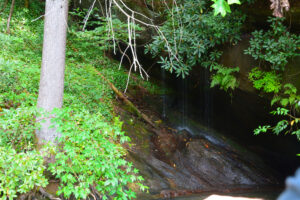
Carnivorous plants tend to grow in places where the soil is poor or lacking essential nutrients. These plants continue to photosynthesize, but add to their nutrition by trapping insects and other small animals or protozoa. To see carnivorous plants in South Carolina, visit Shealy’s Pond Heritage Preserve located in Lexington County. The site includes a mill pond, wetlands, and approximately 6 acres of sandhills. It hosts one of the state’s largest stands of Atlantic White Cedar, as well as a number of rare plants of state concern. It also provides a home for a number of insectivorous plants, including yellow pitcher plant, purple pitcher plant, sweet pitcher plant, and three species of sundews.
Other sites where you may see carnivorous plants include Cartwheel Bay Heritage Preserve, mentioned above, as well as Lewis Ocean Bay Heritage Preserve, Goodale State Park, and Santee Coastal Reserve.
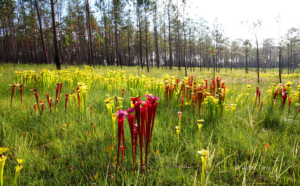
Visit Forty Acre Rock Heritage Preserve where water collects on the top of the 14-acre rock at the high point of the preserve during late winter and spring, providing a habitat for the rare Pool Sprite and other aquatic ephemerals such as the Puck’s orpine and the Elf-orpine. The preserve contains a variety of habitats and is home to numerous spring and fall wildflowers, as well as the unusual rock-dwelling species.
Visit Stevens Creek Heritage Preserve which contains a relict community of plants thought to have existed here since the latter part of the Pleistocene or the last Ice Age. Stevens Creek bluff and associated coves contain 15 rare plant species.
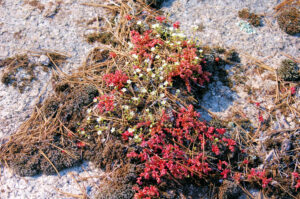
Additional Resources and Sites to Explore
- Wild South Carolina: A Field Guide to Parks, Preserves, and Special Places
- SC State Parks: Park Finder
- National Wildlife Refuges
- SCDNR Public Lands (Heritage Preserves and Wildlife Management Areas) by Geographic Region or specific activities, such as “Hiking” or “Nature Viewing”
- The Nature Conservancy Preserves with Public Access
- SC Audubon Society: Preserves with Public Access
- SCDNR Wildlife Management Areas
- The Palmetto Trail
- Swamp Rabbit Trail
- National Wildlife Refuges in South Carolina
- National Forests in South Carolina
- SC Audubon preserves:
- The Nature Conservancy (TNC) Preserves
- SC Botanical Garden’s Natural Heritage Garden
- USC’s W. Gordon Belser Arboretum
- UNC Charlotte Botanical Gardens
- NC Botanical Garden
- Stanley Rehder Carnivorous Garden
- State Botanical Garden of Georgia
Subscribe for Upcoming Field Trips

